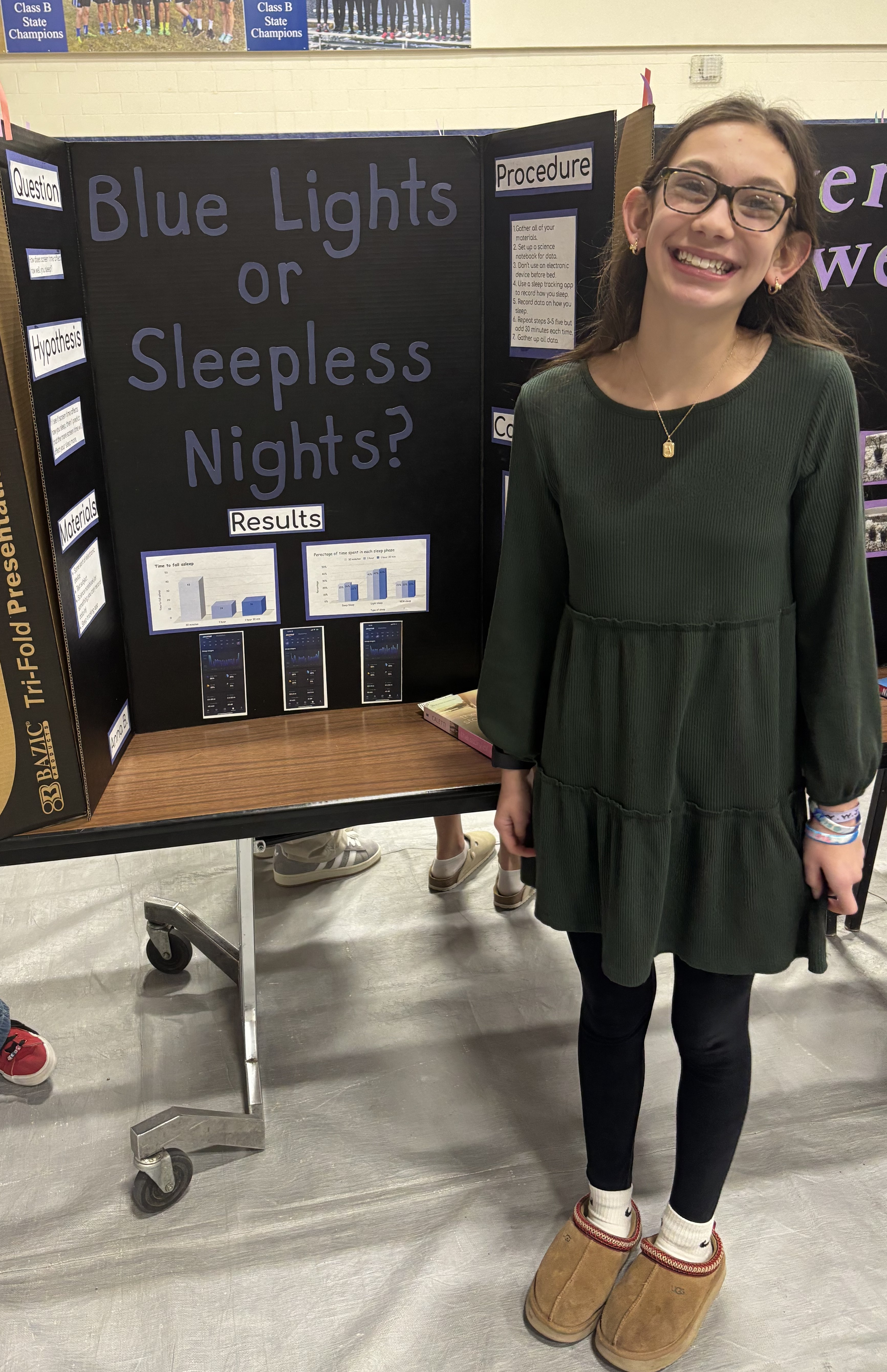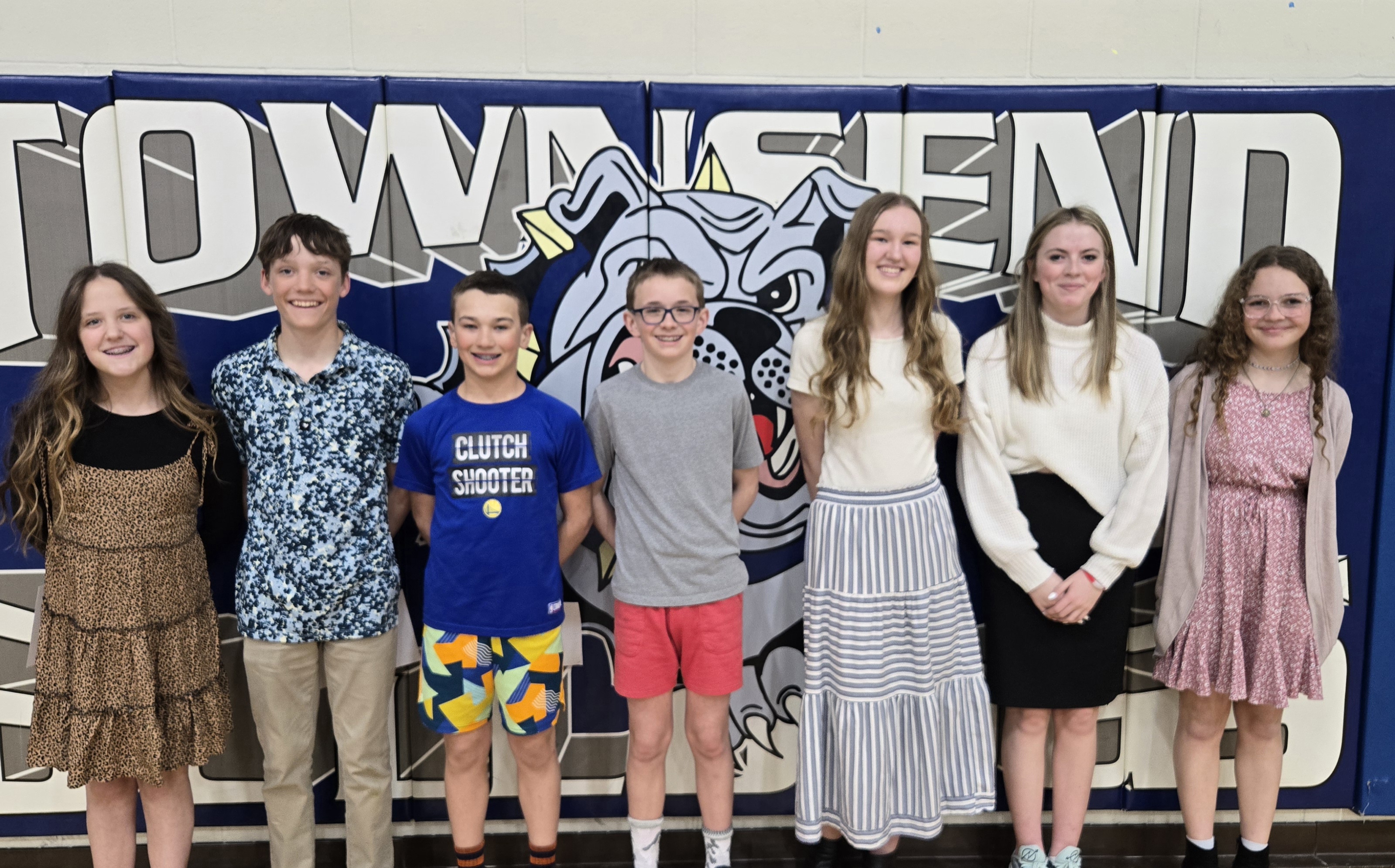Middle School Science Fair Sends 23 Students To State Meet
Author: Karsyn Sangray, Broadwater High School Student Intern
Middle School Science Fair Sends 23 Students to State Meet
Karsyn Sangray
Broadwater High School Student Intern
On Tuesday, March 4, Townsend Middle School held its annual Science Fair. All middle school students presented their months-long projects. Twenty-three of the students impressed the judges enough to make it to the state level.
Hannah Hildreth was one of the eight students to advance from eighth grade. Her project, “Glowing Germs”, provided insight into how gross germs are. She tested how the age of someone affects how quickly the germs are spread. Hannah used a powder to resemble the germs which glowed under a UV light. Having one person in each group who had the powder on their hands she saw how much of the power was spread. Initially, she thought that the younger age group would be the one to spread the most. She was correct about this and said that about 83% of the items they touched displayed the glowing powder.
Another segment of Hannah's project was hand washing. She used the powder on everyone's hands and had them wash. She hypothesized that the adults would do the best and the kids would do the worst. She was proven wrong when the teenagers were worse than the kid group. She said, “I really liked my project and this year’s science fair and I’m excited for State on the 31st of this month.”
Another student who did well at the science fair was Anna Busscher. She made it to the second round and had an interesting project called, “Sleepless Nights”. Her project was on how screen time affects sleep. She predicted that the more screen time she used the more it would affect her sleep. Her results had, “When I did screen time 30 minutes on my phone, it took me 44 minutes to fall asleep, when I did an hour it took me 14 minutes to fall asleep, and when I did 1 hour and 30 minutes it took me 16 minutes to fall asleep.”
She also recorded her Rapid Eye Movement (REM) and had sleep results for each of the screen times. REM is a stage of sleep during which dreams happen. The name comes from the eyes moving behind the eyelids while the dreams occur.
For the 30 minutes of screen time, she had 25% in deep sleep, 41% in light, and 23% in REM. For an hour she had 26% in deep sleep, 42% in light, and 23% in REM. And for the hour and a half, she had 22% in deep sleep, 43% in light, and again 23% in REM. She loved doing her project and was able to present and make it to the second round. She was just short and did not make it to state, but Anna kept her head high and is excited to go again next year.
Fifty volunteer judges from our community helped the middle school by taking time out of their day to help judge. The middle school was so grateful for these people, who helped a lot. The twenty-three students are excited about the upcoming State-level Science Fair.
Article Images
Click on Image Thumbnail(s) to view fullsize image
PhotoCredit: Photos Provided by Karsyn Sangray
Image 1 Caption: Seventh grader Anna Buscher with her Blue Lights or Sleepless Nights science fair project.
Photos Provided by Karsyn Sangray
Image 2 Caption: Hanna Hildreth qualified with her "Gowing Germs' project. She is shown here with the eighth-grade state qualifiers from left: Harley Cox, Gunner Cox, Gavin Begger, Alex Weiss, Hanna Hildreth, Addy Mosher and Abigail McCauley. Not pictured: Lyrique Bryant.
Photos Provided by Karsyn Sangray

